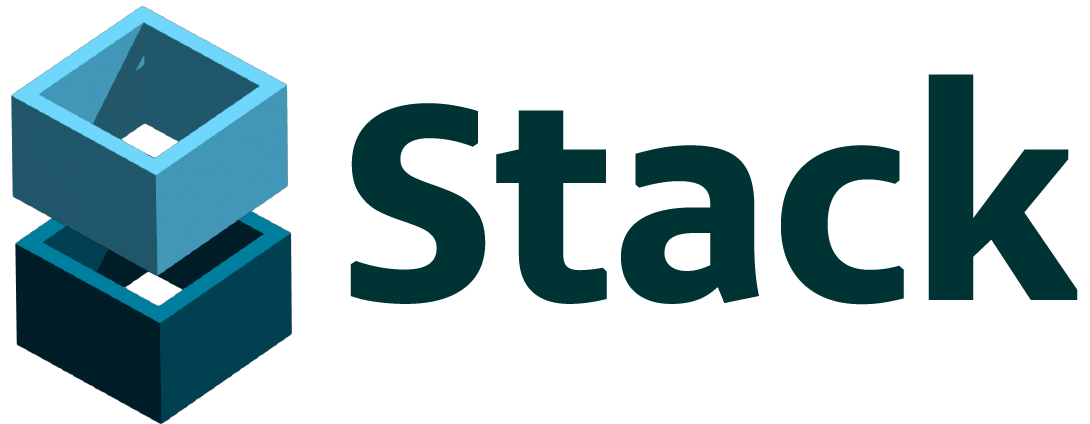Our view at Stack - Simplify web development with Webflow, reduce costs, and deliver professional results. No-code, responsive, and SEO-friendly. Explore your creative potential!

A conversion rate is a critical metric for gauging the performance of your efforts as a SaaS marketer.
This metric measures the number of prospects who convert—or complete a desired action—across a multitude of different marketing channels, including your website, ads, email, and more.
A desired action can be anything from signing up for an email newsletter, downloading a piece of content, requesting a demo, opting in to a free trial, or buying or renewing a subscription to a product.
Calculating a conversion rate is simple, and just requires you to divide the number of conversions you have with the total number of prospects, and then multiply it by 100 (shown in the formula below):
For marketing teams in particular, this metric is vital. At a high level, the effectiveness of an overall marketing program can be measured solely by the conversion rate. And on top of that, it’s imperative to understand the conversion rate of each marketing call to action (CTA), asset, channel, and audience segment.
Ultimately, by measuring each of these conversion rates, your marketing team will have reliable data to better iterate and optimize marketing programs and campaigns to achieve your goals and drive revenue.
To help you better optimize your conversion rate, here’s a closer look at key SaaS conversion rate benchmarks that you can use as a starting point for your work.
Average conversion rates for SaaS businesses
There are two main categories of SaaS business models: low-touch and high-touch. Low-touch businesses focus on getting visitors to sign up for free trials and subscriptions through their website, whereas high-touch ones focus more on enterprise-level demo requests and direct sales. Because the sales process differs for each of these business models, they each focus on different conversion goals.
Low-touch business models
As we mentioned earlier, examples of conversion activities in low-touch business models include free trials with no credit card requirements, free trials with credit card requirements, and “freemium” models. The industry standard for conversion rates for each of those activities are:
- Free trials with no credit card requirements: 8–10% (SmartKarrot)
- Free trials with credit card registration requirements: 25% (SmartKarrot)
- Freemiums: 1–10% (TechCrunch)
High-touch business models
For high-touch business models, here’s a breakdown of conversion rate benchmarks showing funnel metrics for each stage of the B2B inbound and outbound marketing funnels.
Inbound marketing funnel:
- Nurturing new contacts and subscribers to become marketing qualified leads (MQLs): 5%
- Scheduling a meeting with an MQL: 20%
- Converting MQLs to sales accepted leads (SALs): 43.75%
- Converting SALs to sales qualified leads (SQLs): 63.33%
- Converting SQLs to opportunities and assigning revenue amount: 43.33%
- Converting opportunities to wins and receiving revenue: 31.25%
From top to bottom of the funnel, the average conversion rate benchmark is 0.05%.
Outbound marketing funnel:
- Performing targeted outreach to prospects to drive meetings: 15%
- Converting to SALs: 42.5%
- Converting SALs to SQLs: 55%
- Converting SQLs to opportunities and assigning opportunity amount: 50%
- Converting opportunities to wins and receiving revenue: 37.5%
From top to bottom of the funnel, the average conversion rate benchmark is 0.03%.
Additional metrics to consider
Although driving conversions and revenue is a marketer’s ultimate goal, there are other important metrics to consider along the way. Here are five additional metrics to keep in mind when building out your marketing strategy:
- Revenue churn: This metric measures monthly or annual revenue losses from customer churn as a percentage of overall revenue. Customer churn – the monthly number of lost customers as a percentage of overall customer count – is also an important metric to track. A high churn rate may signify that you need to invest more in customer retention and product adoption programs.
- Time to value: This is a critical moment in the user journey when a user realizes the value in your SaaS product. Knowing when that moment is can help a SaaS company optimize the user journey so that customers reach it more quickly. The quicker that a customer discovers the value of your product, the more likely you are to retain the customer and avoid churn.
- Monthly recurring revenue (MRR) and annual recurring revenue (ARR): These metrics indicate the amount of monthly or annual revenue a SaaS company generates. Your marketing team should be aware of current MRR and ARR values and how you contribute to these values.
- Customer acquisition cost (CAC): This metric measures the amount it costs to attract and acquire a new customer. To calculate customer acquisition cost, add up the total monthly sales and marketing costs as well as any other relevant costs like salaries and overhead, and divide the result by the number of customer acquisitions.
- Customer lifetime value (CLTV): Customer lifetime value measures the total revenue a customer account generates over its lifetime. Customer lifetime value increases proportionately to customer account lifetime.
Factors that can limit SaaS conversion rates
Whether you’re trying to increase free trials or demo requests, improving your conversion rate begins with your website. There are various factors on your website that can impede your conversions, so marketers looking to optimize conversions should explore these areas if they’re trying to make improvements:
- Poor communication of value proposition: Even if your SaaS product has a strong value proposition, communicating it poorly will lower conversions. Most importantly, you want to convey how, exactly, your product will benefit the prospect.
- Unclear messaging: If your messaging is unclear, prospects won’t understand how your SaaS solution can solve their problems or is superior to competitors’ solutions. If you suspect there’s a disconnect with your messaging, it might be time to revisit user research and ensure you thoroughly understand your audience and their pain points.
- Low SEO ranking: If you’re not optimizing your web pages for high performance in Google’s search-ranking systems, the search visibility of those web pages will be low. Using relevant keywords in title tags, in headings, and throughout landing page content will help to increase search visibility and conversion as a result.
- Poor web content layout: Certain web page layouts can pull prospects’ attention away from where you want it and dilute the focus of your messaging. Consider how you want a visitor’s eyes to travel along your web page and make sure your main messaging and CTA stand out from the rest of the page.
- No sense of urgency: If there’s no sense of urgency in your headlines or CTAs, prospects may not feel compelled to convert.
Conversion rate optimization for SaaS companies
Now that we’ve established the important role the website plays in overall conversion goals — and what some of the key performance metrics are — we can begin to optimize. Here are some conversion rate optimization (CRO) tips for SaaS marketers.
Conversion rate optimization tactics
The first step in any CRO program is to measure your current conversion rate, or your baseline rate. Then, you can set your goal conversion rate and start working on strategies and corresponding tactics to achieve that goal.
Some common CRO tactics include displaying customer testimonials on web pages to provide relevant proof points, adding chatbots to your website to encourage engagement, and testing above-the-fold headlines and CTAs to capture your prospect’s attention immediately.
Leveraging machine learning for SaaS conversion rate optimization
The best way to ensure you’re optimizing your SaaS conversion rate is by testing many of these types of CRO tactics at once to see what resonates and what doesn’t with your audience. At the same time, it’s critical that you provide each visitor to your website with a personalized experience that’s relevant to them, incorporating firmographic data like their job title, job level, or their company’s industry, as well as aligning to previous behaviors they’ve taken on your website or with your brand on other channels.
Create a highly personalized web experience
Ultimately, building out your website personalization strategy and partnering with a solution that leverages machine learning to automate many of these tests can accelerate your results and conversions — and accelerate your marketing team’s impact. To learn more about creating a highly personalized website experience for your customers and prospects, get in touch with our team today.
If Webflow is of interest and you'd like more information, please do make contact or take a look in more detail here.
Credit: Original article published here.
